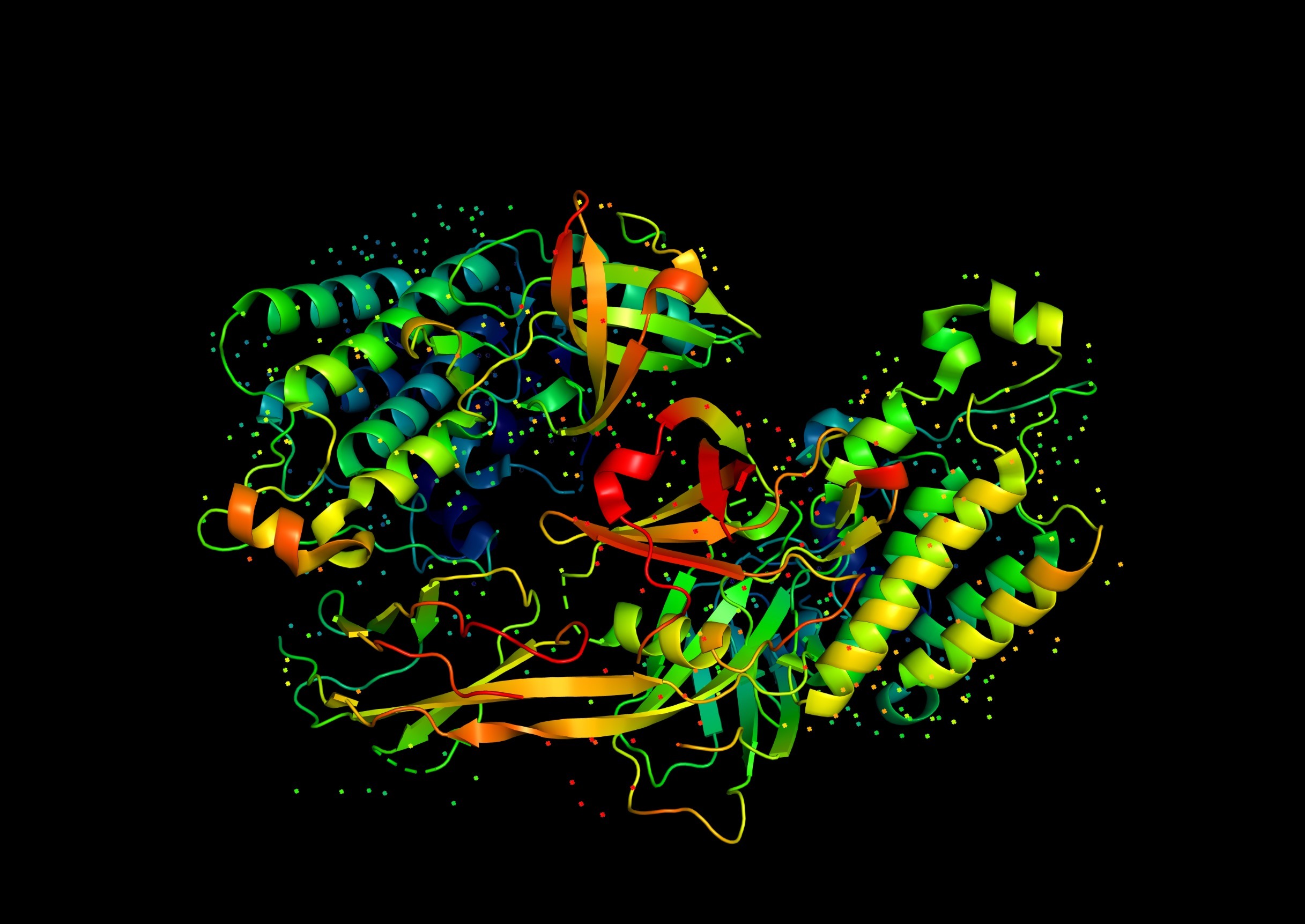Hydroxyapatite (HA) is a naturally occurring mineral form of calcium apatite, which is the main inorganic component of bone and teeth. It is a crystalline substance with a chemical formula Ca10(PO4)6(OH)2, representing a calcium phosphate compound.
The key features and properties of hydroxyapatite
- Composition: Hydroxyapatite is composed of calcium ions (Ca2+), phosphate ions (PO43-), and hydroxide ions (OH-) in specific proportions. The calcium-to-phosphate ratio is approximately 1.67, providing the stoichiometry required for the formation of stable hydroxyapatite crystals.
- Biocompatibility: Hydroxyapatite is highly biocompatible, meaning it is well-tolerated by the human body and does not elicit adverse immune reactions or toxicity. It has been extensively used in biomedical applications, including bone grafts, dental implants, and drug delivery systems.
- Structural role in bone and teeth: Hydroxyapatite forms the mineralized matrix of bone and teeth, providing them with strength and rigidity. It contributes to the mechanical properties of these tissues and serves as a reservoir for calcium and phosphate ions, essential for maintaining mineral homeostasis in the body.
- Crystal structure: Hydroxyapatite has a hexagonal crystal structure, forming elongated and needle-like crystals. The crystals align to create a highly organized microarchitecture in bone and teeth, giving them their characteristic strength and durability.
- Bioactive properties: Hydroxyapatite exhibits bioactive properties, meaning it can interact with biological tissues and facilitate their integration and regeneration. When implanted in the body, hydroxyapatite can promote new bone growth and osseointegration, making it valuable for bone grafts and dental implants.
- Synthetic and biomimetic hydroxyapatite: Hydroxyapatite can be synthesized in the laboratory to mimic the properties of natural hydroxyapatite. Synthetic hydroxyapatite is often used in research, tissue engineering, and biomedical applications. Biomimetic hydroxyapatite refers to hydroxyapatite coatings or materials designed to closely resemble the composition and structure of natural bone and teeth.
The Medical Applications of Hydroxyapatite
Hydroxyapatite has a wide range of applications in the field of materials science, regenerative medicine, and dentistry. It can be used as a biomaterial for bone grafts, dental implants, and coatings on orthopedic implants to enhance their biocompatibility and osseointegration. Additionally, hydroxyapatite nanoparticles are investigated for drug delivery, tissue engineering scaffolds, and as components in composite materials for biomedical applications.
Hydroxyapatite (HA) has several medical applications due to its biocompatibility, bioactivity, and resemblance to the mineral component of bone and teeth. There are some key medical applications of hydroxyapatite:
- Bone Grafts and Implants: Hydroxyapatite is commonly used in orthopedic and dental procedures as a bone substitute or filler. It can be shaped into various forms, such as blocks, granules, or coatings, and implanted to promote bone regeneration. HA-based bone grafts and implants provide structural support, fill bone defects, and facilitate the integration of new bone tissue.
- Dental Applications: Hydroxyapatite is used in various dental applications. It is incorporated into dental materials, such as composites and cements, to improve their strength and biocompatibility. Hydroxyapatite coatings are also applied to dental implants to enhance osseointegration and stability. Additionally, HA-based toothpaste and mouthwash formulations are used for their remineralizing properties and in the treatment of tooth sensitivity.
- Drug Delivery Systems: Hydroxyapatite nanoparticles or microparticles can be utilized as carriers for drug delivery. Drugs or bioactive molecules can be loaded onto or encapsulated within hydroxyapatite particles, allowing controlled release and targeted delivery to specific tissues or cells. This approach is particularly useful in bone-related diseases, such as osteoporosis or bone infections.
- Tissue Engineering: Hydroxyapatite-based scaffolds and matrices are used in tissue engineering approaches to promote the regeneration of various tissues, including bone, cartilage, and even organs. The porous structure of hydroxyapatite scaffolds allows for cell infiltration, tissue ingrowth, and the mimicry of the extracellular matrix, providing a favorable environment for tissue regeneration.
- Coatings on Implants: Hydroxyapatite coatings are applied to metallic implants, such as orthopedic implants or dental implants, to improve their biocompatibility and osseointegration. The HA coating enhances the integration of the implant with the surrounding bone, reducing the risk of implant loosening or failure.
- Diagnostic Imaging: Hydroxyapatite-based contrast agents are used in medical imaging techniques such as X-ray, computed tomography (CT), and ultrasound. The high X-ray absorption properties of hydroxyapatite allow for the visualization of bones, teeth, and calcifications in soft tissues.
It’s worth noting that while hydroxyapatite has numerous medical applications, the specific use of hydroxyapatite in clinical practice depends on factors such as the type of medical condition, patient characteristics, and the particular needs of the procedure.


Leave a Reply